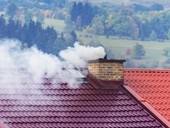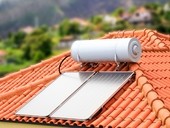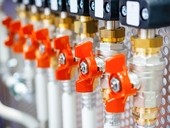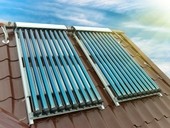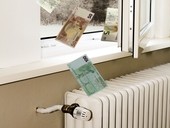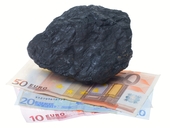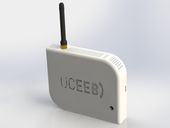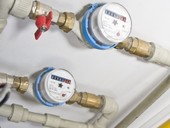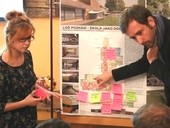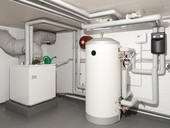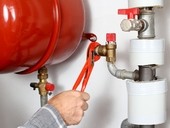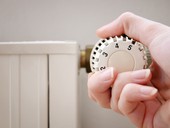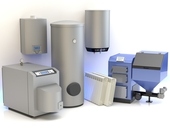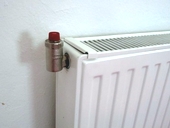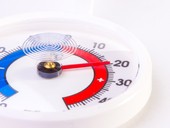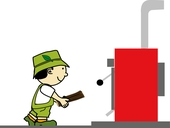Since the combustion of solid fuels in heating boilers is attended by emissions of pollutants, in individual EU countries are gradually adopted different tightening requirements (emission and efficiency), which the appliance must meet. Requirements are targeted both the producers or importers of the combustion devices and theirs' operators. The aim of this article is to provide an overview of current and oncoming requirements and also show their comparison.
Archiv článků od 28.2.2017 do 5.6.2017
The expert analysis reveals the cause of the mechanical failure of the solar collector as a result of non-adjustment of the control valves control to the operating states of the system. Simultaneous adjustment of the control valves eliminated the safety device from the function, when the pressure increased excessively and the collector leaked.
The paper seeks to provide a comprehensive view of counter-flow two-pipe heating system from the design perspective of the temperature parameters and related small or large flow rate through the system. It analyses the work of the thermostatic control valves, zone valves and riser valves in systems with small and large flow rate and on the basis of the analysis it evaluates their advantages and disadvantages. It also deals with hydraulic balancing of heating systems and works with the defined term “sensitivity to changes in flow rate”.
Intermittent operation of a heat source called “on-off” affects the heat consumption for heating. The article gives a concrete example of a house for specific cycle interruption. For historically less thermally isolated house from overheating losses they are at a level of approximately 10.2% of the annual heating requirement. In a well-insulated house, this ratio falls below 5%.
The effort to achieve the highest efficiency of the combustion heat source is associated with the reduction in chimney losses, and thus reducing the exhaust temperature. The result is condensation in the boiler and flue system. It arises aggressive corrosive substances that can shorten the life of the boiler unless it has adequate construction and supports the formation of deposits that reduce efficiency and increase maintenance costs. Disproportionate increase in the efficiency with which the fuel savings are associated is then reflected in increased operating costs.
Indoor environment quality is being more and more discussed topic. Technologies for indoor monitoring are becoming affordable and thus can be installed as autonomous monitoring and indicative systems. It can be used also in connection with ventilation system. In this article there are summarized the most important quantities related to the indoor air quality with its limit values. Particular technologies of sensors are mentioned and new sensor platform for complex monitoring of indoor environment with possible usage for controlling systems affecting indoor environment is introduced.
For individual payment calculation for hot water we need an invoice from heat supplier with the total cost of the property in CZK and with the amount of GJ. In addition, we need the water supplier invoice, which includes the total cost of water and sewerage. For the calculation then we need water consumption from water meters.
The article deals with the issue of safety valves installation for water heaters. Neglecting of the installation conditions often causes damage to the installed appliance, or (as shown in the paper) loss on the water and sewer charges in the case of a safety valve installed in the water heater safety group.
The paper focuses on the analysis and experimental comparison of operating characteristics of various types of radiators. The first part contains a brief search of radiators available on the Czech market. The following is the theoretical analysis of the thermal inertia of the selected objects, both in the phase of start-up and cooling-down. This analysis serves as a basis for evaluating operating performance. Additional consideration by the parameters of the radiator in this study are the geometrical characteristics (the criterion of the space occupied by the dimensions of the body and the size of the transfer surface on the air side), the weight criterion (radiators without heating fluid) volume criterion (heat-carrying substance in the body). Each of the above criteria is related to nominal thermal output.
App update guidance for evaluating annual savings when replacing old heating source for new heat source in terms of the cost of fuel or electricity gives the incorporation of new terms from the current challenges – 67. Challenge OPE 2014-2020 PO2, SC 2.1 – Call for county no. 2. Furthermore, the application has been added to the choice of the heat pump and condensing boiler in comparison with the previous version. The application allows you to get information about the final amount of the subsidy, the approximate evaluation of possible financial savings in terms of fuel costs and electricity and return in the implementation of the exchange of the old solid fuel boiler in detached houses as a new source of heat.
Czech Statistical Office published in the February 2017 data from a large sample survey in Czech households with an Energy 2015. This survey was focused mainly on the consumption structure and methods of use of particular fuels and energy. The data focus on historical comparisons and consumption trends from 1991 to 2015. The statistics include methods of thermal insulation of housing, fuel used for heating and hot water, the average consumption of Czech households, types of heating sources, etc.
Total cost of heating energy typically consists of two items. The former is the payment for consumed energy while the latter is the payment for reserved power capacity or reserved energy capacity in given period. If the customer pays for the reserved power capacity, he/she should address two questions: what is the most suitable level of reserved capacity and how to control the heating system so that the reserved capacity limits are not exceeded. Both questions can be readily solved with the aid of model based predictive controller.
Obtain subsidy for a new boiler and then use it for unapproved fuel burning? There are cases of sellers telling people that it's okay. Such behaviour is of course illegal and the owner of the boiler in such case faces return of subsidy and a financial penalty. The seller on the other hand has nothing to worry about, since he places all the risk on the buyer.
zpět na aktuální články
